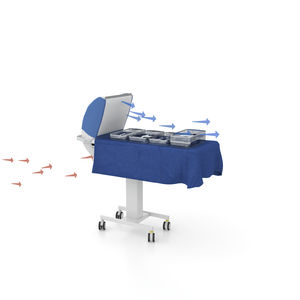
- 医療技術設備
- 病院インフラストラクチャー
- 手術室用層流システム
- Normeditec
手術室用層流システム TOUL Operio移動式携帯用手術台

お気に入りに追加する
商品比較に追加する
特徴
- 応用
- 手術室用
- 設定
- 移動式, 携帯用, 手術台, 外科用はさみ台用
- タイプ
- 横型
詳細
カテーテル室向けモバイル無菌換気システム
Operio(オペリオ)は、手術室のようなISO 5レベルの無菌環境を、工事不要でカテーテル室に即座に導入できるモバイル型の層流換気システムです。ペースメーカー、除細動器、ポートの埋め込みなどの繊細な手技に最適で、手術器具や術野に直接無菌空気を集中送風し、感染リスクを大幅に軽減します。
主な利点:
術野の細菌数を最大95%削減
Cアーム、手術灯、スタッフの動きによる妨げなし
設置工事不要 ― 標準コンセントに接続するだけで使用可能
中央手術室の負担軽減 ― 一部の手技を外来またはカテ室へ移行可能
X線被ばくの低減 ― スタッフと患者の安全性向上
静音設計・冷風なし ― 快適な作業環境
高コストパフォーマンス ― 少ない使用回数でも投資回収が早い
Operioは、必要な場所に即座に清浄な手術環境を提供します。



